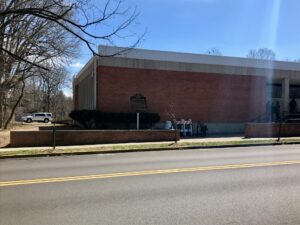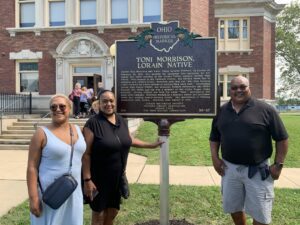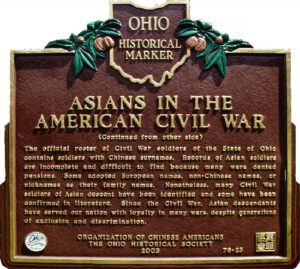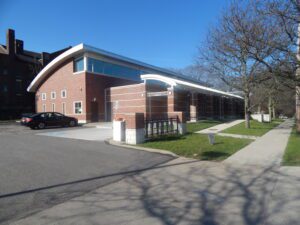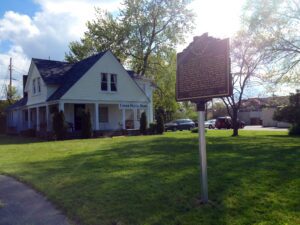, OH
Virginia Hamilton was an author who was born in Yellow Springs in 1934, living and writing here for much of her life. She referred to her works as “Liberation Literature.” focusing on the struggles and journeys of African Americans. Hamilton published more than forty books in a variety of genres, including realistic novels, science fiction, picture books, folktales and mysteries. Some of her most beloved titles include The House of Dies Drear, M.C. Higgins the Great, Her Stories and The People Could Fly. Her books have had a profound influence on the study of race throughout American history, the achievements of African Americans, and the ramifications of racism. Hamilton received numerous awards for her writing before passing away in 2002. Her work is enshrined at the Library of Congress in Washington, D.C.
, OH
Author Toni Morrison was born, Chloe Ardelia Wofford, in Lorain on February 18, 1931. Her passion for language was nurtured by her family and while working at the Lorain Public Library during high school. Then housed in the Carnegie Center, the library hired her to reshelve and catalog books. Morrison said that she “was slow because I kept reading the books instead of putting them back fast.” Graduating Lorain High School (1949), she attended Howard University (BA 1953), Cornell (MA 1955), and she was a member of the Alpha Kappa Alpha sorority. During college she took the name “Toni,” shortening her saint name Anthony. Morrison worked as a literary editor and professor while also writing award-winning novels. She maintained a lifelong connection with Lorain. Morrison died August 5, 2019.
, OH
Despite exclusionary laws preventing U.S. citizenship, Asians served in the Union and Confederate armies and navies during the American Civil War (1861-1865). Many of these soldiers were denied citizenship following their services due to the anti-Asian sentiment, which culminated in the Naturalization Act of 1870 and the Chinese Exclusion Act of 1882. The exclusionary laws continued until 1943, and all restrictions on national origin or race were abolished in 1965. In April 2003, House Joint Resolution 45 was introduced to Congress to posthumously proclaim Civil War soldiers of Asian descent to be honorary citizens of the United States as recognition of their honorable services. (continued on other side)
, OH
One of the most recognized figures of the Harlem Renaissance, Langston Hughes was born in Joplin, Missouri on February 1, 1902 and moved to Cleveland by the time he was in high school. An avid traveler, he credited his years at Central High School for the inspiration to write and dream. The consummate Renaissance man, Hughes incorporated his love of theater, music, poetry, and literature in his writings. As an activist, he wrote about the racial politics and culture of his day. He was awarded the Spingarn Medal by the NAACP. He published over 40 books, for children and adults. Known as the “Poet Laureate of the Negro People,” Hughes most famous poem is “The Negro Speaks of Rivers.” Langston died on May 22, 1967, and his remains were interred beneath the commemoratively designed “I’ve Known Rivers” tile floor in the Schomburg Center for Research in Black Culture in Harlem.
, OH
One of the outstanding American humorists of the twentieth century, James Thurber was born and educated in Columbus. He launched his writing career as a reporter for The Columbus Dispatch in 1920. In 1927 he began writing for The New Yorker, where the first of his distinctively spare cartoons appeared in 1930. Thurber’s concise, witty prose spanned a remarkable breadth of genres, including autobiography, fiction, children’s fantasy, and modern commentary. Two of his short stories, “The Catbird Seat” and “The Secret Life of Walter Mitty,” are among the best-known classics of American literature. Though hampered by failing eyesight, Thurber published almost thirty books in his lifetime. He and his family lived at 77 Jefferson Avenue from 1913 to 1917; the house, listed as part of the Jefferson Avenue Historic District in the National Register of Historic Places, became a literary center and museum in 1984. Thurber is buried in Columbus’ Green Lawn Cemetery.
, OH
With work inspired by mythology, literature, religion and nature, Cowan Pottery played a significant role in the formative years of American ceramic art and established a national following with products sold in fine department stores. The design studio, factory and showroom of Cowan Pottery stood here from 1920-1931. R. Guy Cowan moved the business to Rocky River from Lakewood, where it started in 1913. Although Cowan Pottery closed during the Depression, the firm’s work is still collected and can be found in the Smithsonian, Cleveland Museum of Art and other museums. Comprehensive holdings are in the Cowan Pottery Museum at the Rocky River Public Library.


